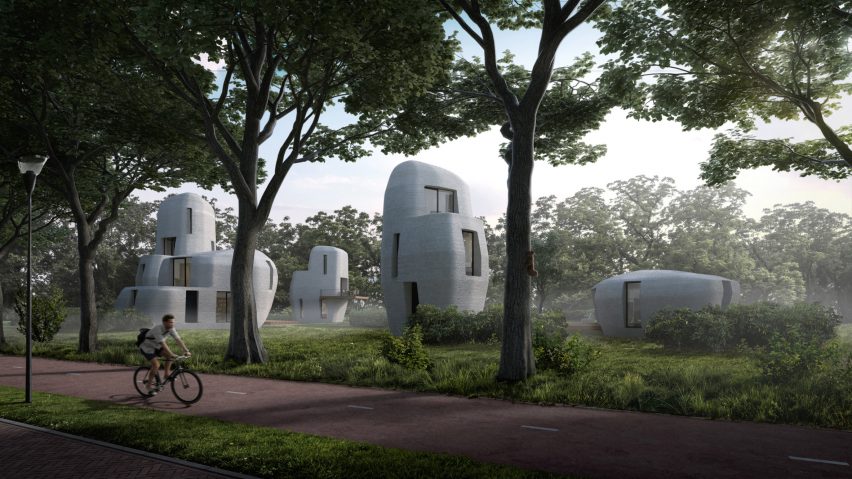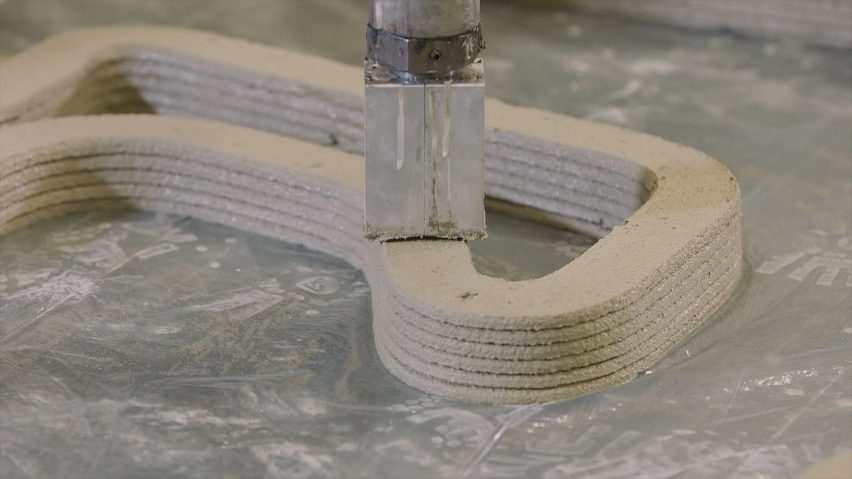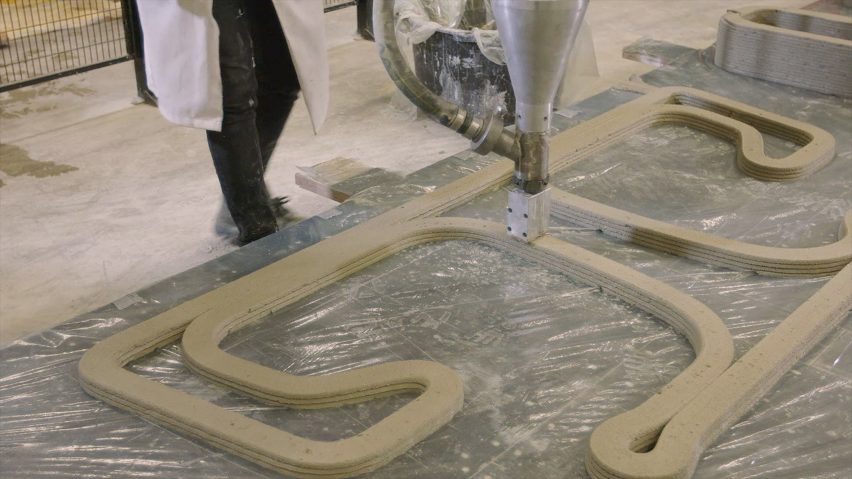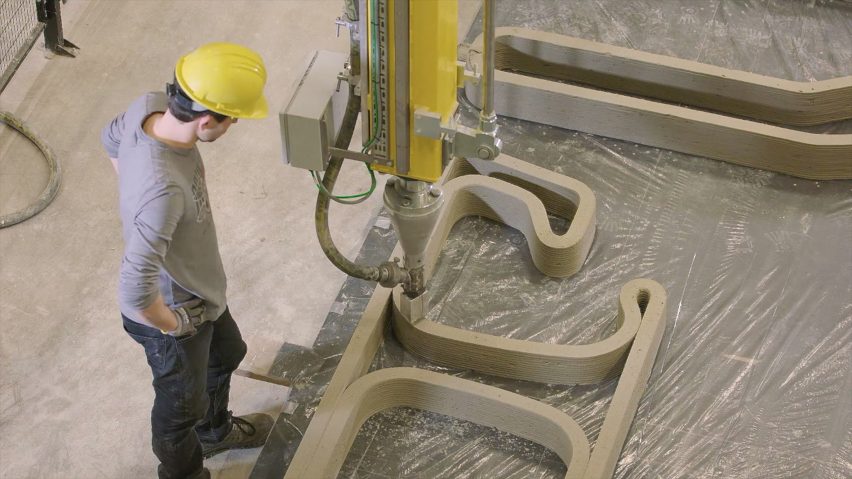3D-printing could enable people to build their own houses "at the touch of a button"
The latest installment of our Dezeen x MINI Living video series explores a plan to build multi-storey housing with 3D-printers, a technique that the project's architects claim will enable people to design and build their own houses quickly and easily.
The Eindhoven University of Technology, together with local architecture studio Houben & Van Mierlo Architecten, is planning to create the world's first commercial 3D-printed housing project, which will be made available to rent through real-estate firm Vesteda.
Entitled Project Milestone, the development will see the construction of five multi-level homes in Meerhoven, in Eindhoven. The first of these houses is expected to be completed and liveable by 2019.

The residences will be produced one after the other, allowing the architects to learn from the fabrication of each. Building elements are being printed at the university's research facility but the team aims to build the final house on site.
The houses will feature curved walls with balcony recesses and deep-set windows and doors. According to the architects, the development references "the menhir-like structures of Stonehenge".
"We wanted to make multiple-storey houses in order to get a really nice landscape of building volumes," says Jelle Houben of Houben & Van Mierlo Architecten.

Each house will be printed using a specially-developed concrete mixture with a low cement content. The team at Eindhoven University of Technology claim that the technique will have a low environmental impact, as the CO2 emissions associated with the production of cement will be reduced.
The architects believe the technique used for the project will allow for "freedom of form and texture" when designing buildings, as they claim 3D-printing can produce a wider variety of shapes than traditional building methods.
"The technique is very different from any prefabricated or fabricated product," says Houben. "We can make different housing typologies, and we can custom-make a design according to a clients wishes."

He explained to Dezeen that the technique could evolve to the point where computerised software will enable people to design and build their homes themselves.
"You could even speculate of developing a software where people can make their own facades and houses," Houben adds. "They can themselves turn their dreams into ready-made plans, to be ordered and executed with a push of a button."
Houben also speculates that the technology could move the role of the architect towards that of a consultant, with 3D-printing offering those hoping to design their own homes ease of use and increased opportunities for customisation.

"There are many possible ways for architects involved in this process," he says. "They could act as more of a technical consultant, or a coach to help users understand the impact and meaning of their design decisions".
Houben & Van Mierlo predict that the fifth and final house will be completed in 2023.
Recent years have seen several houses constructed using 3D-printing as the technique is continually developed and refined.

Early 3D-printed home prototypes were created in China and Russia, but the Netherlands has also produced several, with examples including a micro house in Amsterdam by DUS Architects and a show home presented in Milan by Dutch 3D-printing company Cybe Construction.
The Eindhoven University of Technology team, led by researcher Theo Salet, was also behind the world's first 3D-printed concrete bridge, built in late 2017.
This movie is part of Dezeen x MINI Living Initiative, a collaboration with MINI Living exploring how architecture and design can contribute to a brighter urban future through a series of videos and talks.
